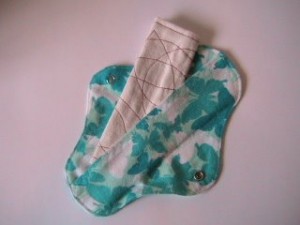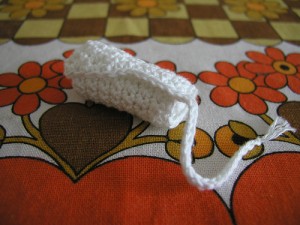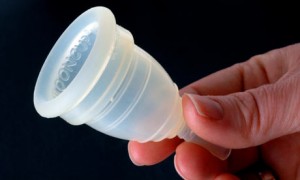Contributed by Guest Blogger: Sierra Kate
Question: What can make you self-reliant for longer that uses up less space and money? Answer: Using reusable items instead of one-use disposables. I am here to discuss a much-neglected category under disposables: Menstrual Products. <Crickets>. Humour me for a moment and contemplate this, I read about one family that had an estimated seven years of tampons stocked. You want an idea better than that right? Consider reusables menstrual products. Believe it or not reusables are better in many ways, but that is literally a whole other post.

 Pads, tampons, and menstrual cups all come in reusable forms. Reusable cloth pads are typically made of cotton, a breathable absorbent fabric. Commercial cloth pads are about $10 per pad. Many people make their own pads to reduce costs; there are plenty of how-to instructions on-line (see Momma Bear’s post: Home-Made, Reusable Sanitary Napkins). Cloth pads last 5 to 10 years. Commercial cloth tampons, or patterns to make them, are much harder to find, but they are out there. One non-cloth option is reusable tampons made from natural sea sponges, a 2-pack is $13, and they can last 3 to 12 months.
Pads, tampons, and menstrual cups all come in reusable forms. Reusable cloth pads are typically made of cotton, a breathable absorbent fabric. Commercial cloth pads are about $10 per pad. Many people make their own pads to reduce costs; there are plenty of how-to instructions on-line (see Momma Bear’s post: Home-Made, Reusable Sanitary Napkins). Cloth pads last 5 to 10 years. Commercial cloth tampons, or patterns to make them, are much harder to find, but they are out there. One non-cloth option is reusable tampons made from natural sea sponges, a 2-pack is $13, and they can last 3 to 12 months.
 I favour the reusable menstrual cups. They are bell-shaped and are typically made from natural latex rubber, or silicone. About the size of a shot glass, they sit internally and collect menstrual fluid instead of absorbing it. They cost about $30 to $40 and last 5 to 10 years. You can easily increase your self-reliance by stocking up. Doing the math, 4 to 8 individual menstrual cups (or sets of cloth pads) could last a woman until menopause.
I favour the reusable menstrual cups. They are bell-shaped and are typically made from natural latex rubber, or silicone. About the size of a shot glass, they sit internally and collect menstrual fluid instead of absorbing it. They cost about $30 to $40 and last 5 to 10 years. You can easily increase your self-reliance by stocking up. Doing the math, 4 to 8 individual menstrual cups (or sets of cloth pads) could last a woman until menopause.
What about being able to make them yourself and be truly self-sustainable? Most people wouldn’t consider it on this matter, because it requires a lot of research and hard work, and the above options for self-reliance don’t take up a lot of space. But, out of curiosity, “what if”?
If you are interested in self-sufficiency when it comes to menstrual products you have a few options. Start with growing a natural fiber. Cotton (a sub-tropical bush), soft and absorbent, is the best option. The second best would be low-THC hemp (wide geographic range), however daft legal issues currently abound on this topic. Natural sponges have been harvested for millennia as luxury items; however this is dependent on a viable sponge population living nearby (such as Florida). Lastly, ones made from rubber. Natural latex rubber has many uses, and is created by curing latex, a milky plant sap. A tropical tree is used commercially; other sources of latex are guayule and common dandelions. Silicone rubber is made from silica (a sand used in glass-making) and other compounds and has been produced for about 60 years. You can find rubber mold-making-kits if you want to tinker, as rubber has all sorts of uses. The Native Americans made latex rubber for millennia but theirs may not have had the quality or consistency of modern rubber production.
Ironically, there are many other good uses for disposable tampons after TEOTWAWKI. There are a total of ten(!) survival uses in this article: The Swiss Army Survival Tampon – 10 Survival Uses.
So from a self-reliance prepper perspective, stocking reusables is great. But perhaps you, or a fellow prepper, are not convinced. If you are wondering if this will work well from a user perspective, I use menstrual cups and I’ll tell why it is better in next week’s Part 2 post.
Sierra Kate’s Bio
Kate currently lives in small-city Canada and has just come across the world of prepping. What initially grabbed her interest in prepping is how well it fits in with her own intellectual inclinations and desires for a healthy lifestyle that has sustainability, self-reliability, utility and minimalism in mind. She enjoys solitude and her hobbies include reading and biking.

humm well i hadn’t thought about it and you got me thinking on the subject… gonna do a little more thinking about it now.
^ It certainly is worth thinking about. I have a lot of information in Part 2 from a user perspective that you may find helpful. It went up three days ago, or two days after your comment.
http://tracemypreps.xyz2012/11/19/sierra-kate-reusables-self-reliance-feminine-hygiene-part-2-how-do-they-perform/
Pingback: Sierra Kate: Reusables, Self-Reliance & Feminine Hygiene, Part 2 – How Do They Perform? | TraceMyPreps